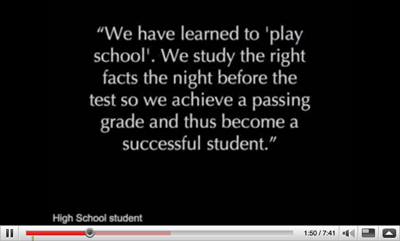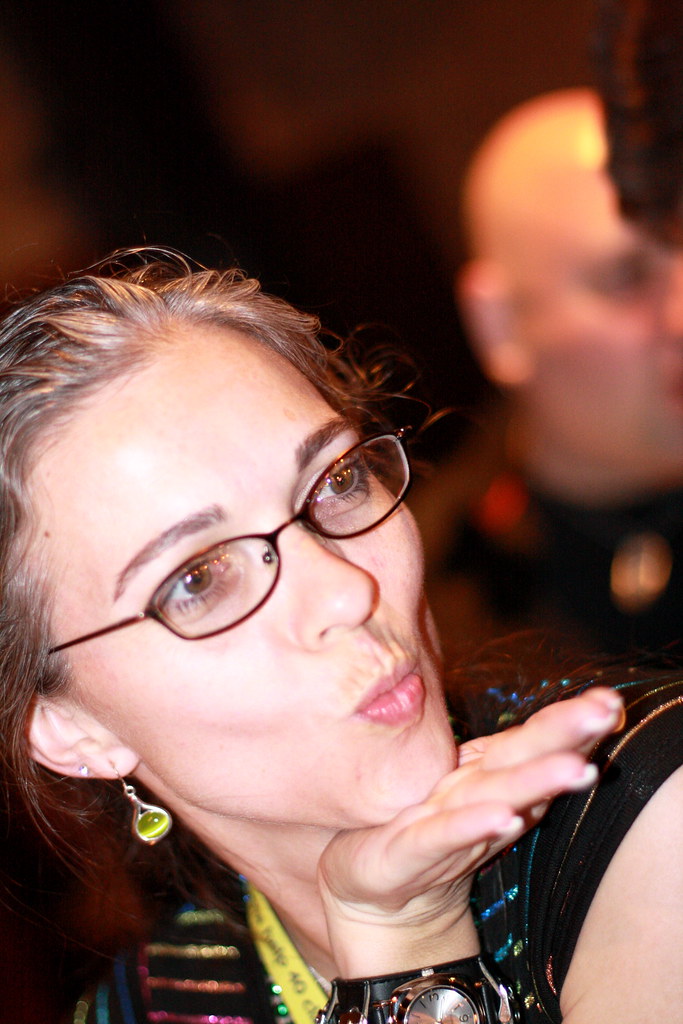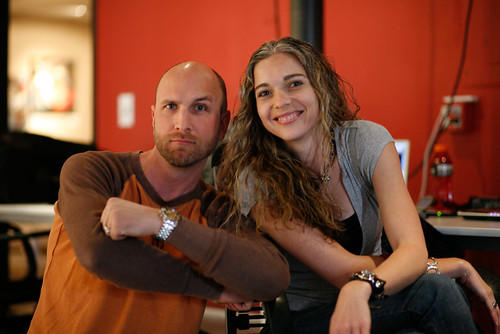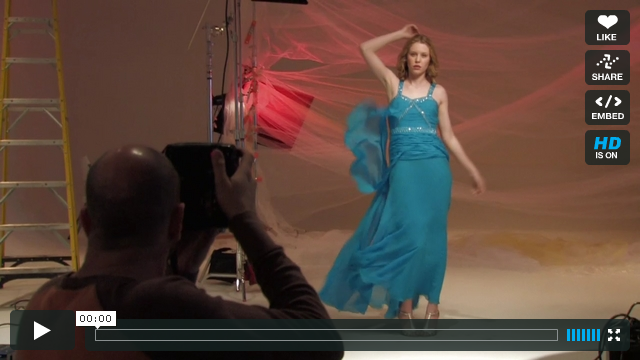Archive for category blogging
more writing on social media
Posted by Ms. Herr in blogging, social media, the biz side on March 8, 2010
It’s been a hot minute since I’ve posted here, and it’s been an even hotter minute since I written anything specifically for post on this blog. The lack of new writing here does not mean that I haven’t been writing. Most of my recent work can be found on the Terralever blog, where my focus is social media. I have two newish pieces that you may find interesting.
- Is Facebook helping or hurting your hiring efforts? – Most existing conversations about social media and job hunting address the topic as it impacts job seekers. These conversations either serve as warnings (photos of keg stands will kill your chances of getting hired) or as advice (blogs and microblogs can help you demonstrate your skills and network with the right people). I take a different approach, and instead address how social media impacts a company’s ability to recruit smart new talent.
- Mashable Fans: Pawns in the impressions game – A few weeks ago, Mashable changed their Facebook posting style from simple headlines to phrasing updates as questions</a>. I criticized The Social Media Guide for trying to stimulate fan interaction and conversations, while being noticeably absent from those same conversations. Mashable promptly responded, and you can see their remarks in the comments of the original blog. The company has also continued to experiment with their posting strategy and style, making some positive changes, which I summarize in a follow up post.
Back to this blog, Ms. Herr when online is intended to be the accumulation of all facets of my life, including ruminations on any topic from the personal to the pass times to the professional. More on any and all of those things are in the works.
slackerific
Posted by Ms. Herr in blogging, randomness, self-portraiture on October 19, 2009
You know those posts where bloggers apologize for neglecting their blog, or only blogging sporadically, over a long period of time and subsequently promise to deliver more good content in the very near future? I’ve never understood these posts. It’s like having a meeting to talk about what hasn’t been done, thereby creating the need to have another meeting at some indefinite point in the future when something has actually been done. It’s a waste of time on something that has no point.
Yet bloggers still write, and publish, these “sorry I’ll be better” posts. And this is mine.
Thanks for reading. 😉
have a say in what others say about you
Posted by Ms. Herr in blogging, marketing & advertising, social media, the biz side on September 4, 2009
Originally posted to the Terralever blog on September 3, 2009 as:
Businesses Using Social Media to Stay on Top of their Brands
It’s all around us and it’s here to stay. Businesses and brands on our favorite social media platforms hoping to be friended, followed and fanned by existing and potential customers who will then go and share branded content with their own friends, followers and fans. Social media networks make this sharing easy. Comment, like, retweet, favorite, or star something, and others will see it. It’s that word of mouse marketing.
The good news for businesses and brands is that over half of participants in social media networks are currently connected with a brand and 46% have spoken positively about a brand.
The question for companies, then, is how are you influencing these mentions? Are they unsolicited references to your product or service? Or are they the effect of others sharing the content you’ve published online? Consider the most mentioned brands on Twitter are Starbucks, Google, BBC, Apple and AIG. All are big name brands, but only the first three have a Twitter presence. Apple and AIG do not, and in the case of AIG, mentions were more often criticisms of company operations as they came to light during the financial crises than any sort of messaging initiated by or on behalf of the company.
On July 22nd, social media channels were abuzz with the announcement that Amazon bought Zappos. News of the announcement was quickly followed by links to a letter from Zappos CEO Tony Hsieh to employees explaining foreseeable affects of acquisition, and to a video of Amazon CEO Jeff Bezos talking about both companies and his views on entrepreneurship. Amazon and Zappos are both incredibly active in social media; Amazon is the sixth most mentioned brand on Twitter. That engagement from both companies helped shape conversation about the acquisition. The video received over 35,000 views from site embeds occurring on that same day. The letter inspired hundreds of blogs and reblogs, and thousands of tweets.
When the information you’ve created is what’s being shared, then you have more opportunity to have your voice reflected the stories others tell about you.
*If you’d like to leave a comment, please feel free to do so here and/or on the original post on the Terralever blog.
@MsHerr hits 10k tweets… & hands over the keys
Posted by Ms. Herr in blogging, community, geekery, self-portraiture, social media, socialmediatoday on July 21, 2009
After 26 months on Twitter, I’m fast approaching ten thousand Twitter updates. That’s a lot of characters. It’s a bit of a milestone. Not like turning 18. Or turning 21. Or losing your virginity. But a milestone nevertheless.
@spectagirl suggested 10,000 shots. Indeed momentous, but not quite what I had in mind. @smarti9 started #MsHerr10kWatch2oo9. My friends are often quick to rally behind my endeavors in some fashion or another.
A few hours ago, I was 10 tweets away from 10k. By the time you read this, I’ll be 7 tweets or less from 10k. The build up to that 10,000th tweet has been fun, but also a bit daunting. Suddenly 140 characters has become a much bigger deal than necessary. There is this pressure to be momentous. Funny considering I’m much more likely to miss it completely (despite @smarti9’s 10k watch) and either use it on a reply or post something completely irrelevant.
I’ve decided to hand over the keys to my Twitter account. That means you (and everyone else) will have the opportunity to post as and from @MsHerr for up to 26 hours.
Why am I doing this? This is not the first time I’ve yielded control of my social presence. A year ago, I asked my community to help me select my avatar. My reasons then still hold true today. I believe in the social web. I believe in trusting my friends, connections, and communities. I believe in yielding control. And I’m curious to see what will happen. It could be phenomenal success or it could be an abysmal failure. But why not? Don’t answer that, it’s a rhetorical question.
How will it work? I have set up a Ping.fm account linked to @MsHerr and will publish the associated posting email address in my 10,000th tweet. You (and everyone else) can send a tweet to this address, where it will then feed automatically to @MsHerr. My only request is that you sign your tweet with ^@yourtwittername (please replace yourtwittername with your actual twitter name so people can link to you). Ping accepts text updates and photo updates, so feel free to post pics too. If you need a how-to, check out Ping’s posting guides.
My disclaimer: I reserve the right to delete any tweet. If you do not sign your tweet, I will probably delete it. If I feel violated by your tweet, I will probably delete it. After all, this is my account we’re talking about.
That’s it. That’s the deal. Make me laugh. Make me cry. Make me proud. And remind me why I fell in love with the social web so many months ago.
‘play school’
We have learned to ‘play school’…
We have learned to pretend to be learning,
___ so that we can satisfy others expectations of what ‘means’ to have learned.
Meanwhile, what happened to play?
Real play…
___ the do it because it’s fun
___ ___ and because I’m interested in it
___ ___ ___ because it stimulates me
___ ___ ___ ___ kind of play.
Which also happens to be the kind of play that results in learning
___ but is not engaged to satisfy learning,
___ ___ but to satisfy pleasure,
___ ___ ___ or curiosity.
It’s like reading…
How many of us used to love to read?
How many of us still do?
Did we find other diversions that we love more?
Or was it the expectation that we learn something from our reading…
___ not just any something,
___ ___ but the certain something
___ ___ ___ that he/she/they wanted us to learn.
What, then, do we really learn?
To please others?
To deny our own curiosities?
To fall out of love with that which we used to love?
I, for one, enjoy school…
___ minus the deadlines,
___ ___ and the expectation to reach pre-determined outcomes.
I enjoy school
___ because I like learning.
I like learning
___ because I love the way my head feels
___ ___ when it’s seems ready to implode
___ ___ ___ with all the cool stuff going on inside it.
*Inspired by Pay Attenion, found via Daily Sense.
Congratulations
Your first AWS Elastic Beanstalk Node.js application is now running on your own dedicated environment in the AWS Cloud
This environment is launched with Elastic Beanstalk Node.js Platform
What’s Next?
- AWS Elastic Beanstalk overview
- AWS Elastic Beanstalk concepts
- Deploy an Express Application to AWS Elastic Beanstalk
- Deploy an Express Application with Amazon ElastiCache to AWS Elastic Beanstalk
- Deploy a Geddy Application with Amazon ElastiCache to AWS Elastic Beanstalk
- Customizing and Configuring a Node.js Container
- Working with Logs
#SXSW wrap & rawk: part 2 of 2 … the highlights
As I listen to the podcast of Rawking SXSW Year Round panel, I’m finally writing the last of my South by Southwest wrap up posts. What can I say, March was a busy month, first getting my #getmetosxsw on, then the event itself, then returning to a visit from my aunt and cousin from Kansas, and finally getting backing into the groove of work and the real world.
So how was it? In a word: AWESOME! In all realness: the dress rehearsal for next year.
Despite all the people I talked to and the questions I asked before I went, there really is no way to know what to expect until you’ve experienced it once. Over and over I was told that it was less about the panels and more about the people. As a knowledge lover, it’s hard to let go of the desire to attend panels, lots and lots of panels. My selection of these was hit and miss. Some I couldn’t even get into because they were over capacity. The good news is that most, if not all, of them are supposed to be available as podcasts.
But the people… The people were a definite hit. Three types of people specifically. Type 1: The people you only get to see when you’re both in town for the big conferences. Type 2: The people that you’ve connected with online, but have yet to meet in real life. Type 3: The people you never knew you never knew. My SXSW highlights are [almost] all about the people.
Darryl Ohrt2, Missy Reitner3, and Joey Leslie3 discover a new tasty bizzeverage – I’m not a beer drinker, so when I rendezvoused with Darryl for drinks, I ordered a snakebite and black. Part lager, part cider, with a splash of black currant. The slightly red coloring piqued curiosity. The taste won over a few new fans. >> Darryl and his Plaid colleagues on will venture on their third PlaidNation tour this summer. I’ll be watching, and I’m scheming on how to secure one of their super nifty retro hotel keyrings.
Clarence Smith, Jr.2 – For my part, I was captivated by @dykc from the first “Marinate.” We mutually followed fo a year, text tagged the first two days of SXSW, greeted like old friends, and the got up got up & got down and the dance floor before all was done. Not one moment was anything less than uplifting. >> Clarence, both storyteller and storyseeker, took a turn on the mic at Fray Café 9.
WLTV impromptu wine party(s) – This was my first time seeing Gary Vaynerchuk1 in a big conference setting, and he impressed me on a variety of ways. From greeting people he’s met only once or twice before to yielding over two-thirds of his panel to his audience, he has a way of seeding meaningful sentiment into each encounter. One night, Gary threw two impromptu wine tasting parties advertised with a few simple tweets and drew a significant turnout. The magnetism this man has with an audience thirsty for inspiration is awesome to behold. >> Gary’s got more projects than a girl has breath to talk about, one of which is a book due for release this fall (likely under a different title than the one listed in the article).
Kissing Penguin – By the second day, I had decided to kiss Jeremy Tanner1 every time I saw him. Plant a quick peck on the cheek, then walk away without a word. He’s like a big teddy bear. But he’s got some stealth too. The sneaky devil beat me at my own game once! >> Penguin was recently selected as a Ford Fiesta Movement Agent.
Declared missing by the #phx crew (sorta) – At the WordPress BBQ, Curtis Miller and Chris Chandler told me they thought I’d disappeared. We’d had an early dinner two nights before, but not even a passing in the halls since. I took it as a compliment. It meant I was off meeting new people. >> Chris and Curtis deliver a wickedly dry humorous podcast called Personality Flatline. It’s been on a bit of a hiatus as they get their new company, Flatterline, off the ground, but I hope it makes a quick return.
Lunch with strangers –I bumped into Jeremy Hubert3 after tweeting about wanting to have lunch with strangers. I’d met Jeremy the night before, so he didn’t count as a stranger. The two guys with him did. After lunch, and I told Jeremy I’d eat with him everyday on condition that he introduce me to strangers each time. Call it an effort in outsourcing my networking.
And gettin’ my dance on – Friday night, Saturday night, Monday night… I got my dance on quite a bit. Indeed, one morning I woke to soreness and a monster blister on my little toe. More often than not I was with Chris Smith3 (aptly named @groovemonkey), Brian Brodeur3 (a #phx peep I never knew I never knew), and the Blurb crew3. Good, good times! >> Brian was at SXSW photo documenting Media Trust’s Relevantly Speaking shoots at SXSW, and is responsible for the shot of me shown above.
Congratulations
Your first AWS Elastic Beanstalk Node.js application is now running on your own dedicated environment in the AWS Cloud
This environment is launched with Elastic Beanstalk Node.js Platform
What’s Next?
- AWS Elastic Beanstalk overview
- AWS Elastic Beanstalk concepts
- Deploy an Express Application to AWS Elastic Beanstalk
- Deploy an Express Application with Amazon ElastiCache to AWS Elastic Beanstalk
- Deploy a Geddy Application with Amazon ElastiCache to AWS Elastic Beanstalk
- Customizing and Configuring a Node.js Container
- Working with Logs
#snapshoot Twitter-Interactive wrap up
Posted by Ms. Herr in art stuff, blogging, events, social networks on February 24, 2009
It’s been only five days, but it still feels like yesterday that I was on set with Mark Wallace for the Twitter-Interactive photo shoot at Loft 19 Studios. It was a crazy amazing day!
Mark Wallace of SnapFactory was given the opportunity to test out the new equipment by Profoto, makers of high-end photography lighting equipment. Mark is an avid Twitterer, and conceived a live-tweeted photo shoot that allowing readers to not only follow the behind-the-scenes action, but ask questions about any aspect of the shoot, from concept to technical details. The interactive approach is such a natural fit as Mark already produces the Digital Photography 1 on 1 video series where he answers viewer-submitted questions.
Call time was 8:00am, and with only 9 hours scheduled for the shoot, all time was prime time. We had our share of challenges, from the hair, makeup, and wardrobe team getting stuck in morning traffic, to memory card failure, to the constant evaporation of time. Consider that we had four models, each with several wardrobe changes, and three sets. Add in the live uploads of behind-the-scenes photos to Flickr and the steady conversation with those following on Twitter, and you’ve got a whirlwind day.
Loft 19 was a truly amazing space to work in. The first thing that strikes you is scale. It’s a large studio offering incredible freedom for designing sets. The cyclorama is beautiful. The amenities are icing on the cake, with two lounges, ample wardrobe/hair/makeup space, and even an espresso machine which definitely got a workout while we where there.
There were so many cool parts to this project, but star of the equipment show was the Profoto Pro-8a Air which enables super fast flash cycling. The Pro-8s can generate up to 20 flashes per second. Mark shot at 10 frames per second, still incredible given typical recycle times on a flash can be up to 1 second. This clip (opens new window) only hints at the Pro-8s capability, and be sure to listen for shutter sounds as the video couldn’t capture each flash cycle.
Be sure to check out the Flickr photostream, and watch the SnapFactory blog as Mark will be posting a series of recaps about various aspects of the shoot. If you have any questions, ask. Mark is great about sharing his knowledge with others.
Many thanks to the team of people who contributed time and resources that made this event possible: Mark Wallace, Diane Wallace, and SnapFactory, Loft 19 Studios and Floyd Bannister, the models of The Agency Arizona, Erin Markis, Heather Blaine, Danno, and Jeff Caroli.
yours truly, on the job as reporter for a Twitter-Interactive photo shoot
Posted by Ms. Herr in art stuff, blogging, events, social networks on February 18, 2009
I’ve been buzzin’ with excitement since Tuesday when I landed an awesome gig assisting Mark Wallace for an all-day Twitter-Interactive photo shoot Thursday … that’s tomorrow … where he tests out the Profoto Pro-8 Air packs.
Let me rewind and start from the beginning. I’m gonna go fast, so hold on…
I met Mark and Diane Wallace at Twestival Phoenix one week ago. I’d had a little conversation with Diane previously on Twitter, but Twestival was the first in-person meeting and the first conversation not limited to 140 characters. Over the weekend, we rectified any follows and follow-backs that were not already in effect over our many multiple accounts. Mark inquired about the #getmetosxsw project I’d just launched, and I checked out Mark’s portfolio, Diane’s portfolio, and the SnapFactory site. Mark generously offered to reach out through his connections to help me get to SXSW, and I stumbled across a blog post about a photo shoot where Mark would be live-tweeting the behind-the-scenes story of trying out some new equipment. I got a little click happy with the links, discovering Mark tried live-tweeting another photo shoot and mused it might work better if he had a reporter to tweet on his behalf. I asked to be that reporter. Mark talked it over with the team. And if haven’t figured it out by now, they brought me on board!
<insert emphatic YESSSSS!!! here>
Tomorrow morning, we’ll meet at Loft 19 Studios at 7:00am (Arizona time) for setup, model call-time, etc. The shoot will run from 9:00am-5:00pm. Mark will shoot fashion, Diane will do makeup, Erin will style wardrobe, and Danno and Jeff will shoot behind-the-scenes footage. And me? I’ll be tweeting the whole thing: the setup, the technical details, the styling, the models, the drama. I’ll be taking your questions for Mark and the team, then posting their answers.
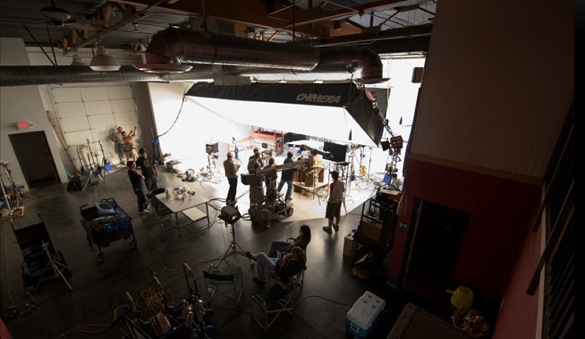
Check out the SnapFactory blog to meet the team and meet the models. Mark tells a great story and has a wealth of prep coverage, including the model fittings.
To catch tomorrow’s live action, follow @jmarkwallace on Twitter (I’ll be tweeting as him), watch for the #snapshoot updates on Twitter Search, and most definitely tweet in with your questions and thoughts.
Congratulations
Your first AWS Elastic Beanstalk Node.js application is now running on your own dedicated environment in the AWS Cloud
This environment is launched with Elastic Beanstalk Node.js Platform
What’s Next?
- AWS Elastic Beanstalk overview
- AWS Elastic Beanstalk concepts
- Deploy an Express Application to AWS Elastic Beanstalk
- Deploy an Express Application with Amazon ElastiCache to AWS Elastic Beanstalk
- Deploy a Geddy Application with Amazon ElastiCache to AWS Elastic Beanstalk
- Customizing and Configuring a Node.js Container
- Working with Logs
Protected: article by UjENA.com – What Your swimwear Says About You?
Posted by Ms. Herr in blogging, window shopping on January 17, 2009
two theories regarding social media, human dimensionality and community fragmentation
Posted by Ms. Herr in blogging, community, human dimensionality, social networks, socialmediatoday on January 13, 2009
Social media is at once a new and old field. Those such as Christopher Locke, his fellow authors in The Cluetrain Manifesto (website or book) and others who have been around since the internet’s inception would say the foundations were lain decades ago. Those who have entered the field in the last couple of years are still considered early adopters. Yet there are many more that have yet to realize that those giants known as MySpace, YouTube and Facebook are just the biggest in a seemingly endless stream of social media channels.
Like so many fields in fledgling states, the early adopters are in a mad rush to understand the trend, define the vernacular, explore the potential and forecast the implications. Social media is deconstructing conventional notions of relationship building, information sharing, and personal and brand engagement. The implications will be numerous, diverse and far-reaching.
Some would consider me an early adopter…
I’ve been sitting on two theories for several months. They are theories that I think few people, if any, are talking about. And they are theories the have emerged as what I’ve learned in the relatively short time I’ve been engaged in social media has subconsciously intertwined with the semblance of knowledge gathered during my years as student of architecture (UNM and ASU).
To date, I’ve done nothing to push, publish, or promote my theories, largely because I have felt a bit intimidated by the amount of research that I think will be required to adequately explore them. But time to sit no more. Time to give my thoughts public face. Time to talk less and DO more. (Thanks to @templestark for callin’ me out).
one: social media facilitates the re-piecing of human dimensionality.
Driven largely by our car-dependent culture and the specialization of industry knowledge, we have come to live very fragmented lives. We live in one place, work in a second, and play in a third. We give our time to this group and our money to that one. In each place, neighborhood, district, and organization, we associate with specific groups of people, each representing a niche, and often isolated, community. We project the parts ourselves relevant to each community’s respective cultures, operating within specific norms and talking about specific subjects. We are perceived accordingly and we are encouraged to maintain certain boundaries lest one area leak into another and compromise our standing in both.
With little crossover between our personal, professional, recreational, and hobby interests, most of the people we encounter only experience a small sliver of our personalities. Yet what makes humans so fascinating is the interweaving of likes and dislikes, strengths and weaknesses, skills and knowledge, indulgences and aspirations. These things interweave to create depth, breadth, complexity, and richness. They create dimensionality.
Social media opens the door to the fuller picture of our selves. We may still generally correspond with friends on Facebook, network with colleagues on LinkedIn or Biznik, and share ideas with people of similar passions on any number of niche interest sites, but the barriers to connecting with any one person in any number of communities are dramatically reduced. Time and distance are only nominally relevant. We’re easier to find. We’re easier to observe. We’re easier to engage. Indeed, it almost seems taboo to deny “friendship” in one community when it’s already been granted in another.
Each new request in a subsequent platform, whether online or off, flows from an interest that extends beyond the slivers of our personality toward the greater whole of our dimensionality.
two: solutions to community fragmentation will be found first in our online communities, and if they’re paying attention, urban planners and designers may be able to extrapolate the learnings for application within our physical communities
The fragmentation of our physical, neighborhood, and civic lives has long been a concern for urban planners and community developers. Whole genres, such as New Urbanism, have emerged from the search for design solutions that will help us patch the pieces back together for more cohesive lifestyles. Organizations, research efforts and books are dedicated to identifying causes and posturing solutions. There will be no one right answer, but there does not yet seem to be a satisfactory answer.
The proliferation of social media platforms is trending to a similar fragmentation of online communities. Blogs, videos, networks, bookmarks, games, podcasts and live-streams all provide means to produce, distribute and share content. Even within a single content type, there are a multitude of platforms. Consider YouTube, Viddler, Vimeo, Ustream Tv, and many more, all operating in the video space.
Early adopters jostle for beta invites from each new launch. We play with the functionality, features, user interface and mobile capabilities. We play with the other users. We love an application and become loyal users and evangelists. We hate it and they migrate back to another preferred application. Or we fall somewhere in the middle, neither passionate nor dispassionate. Over time, we collect a pocketful of applications we use frequently, as well as a vast network of friends/colleagues/associates unique to each application. We collect fragment communities.
The online world grows, adapts and evolves much faster than the physical world, so while online communities mimic that which has already undermined our physical communities, they will also find solutions much quicker. From inception to prototype to product launch, maturation times drop and results evidence sooner. The quest for solutions has already begun. Feed aggregators and application sharing are only the beginning. Urban planners and designers who take heed now will experience a virtual living lab, and the learnings will be invaluable.
Congratulations
Your first AWS Elastic Beanstalk Node.js application is now running on your own dedicated environment in the AWS Cloud
This environment is launched with Elastic Beanstalk Node.js Platform
What’s Next?
- AWS Elastic Beanstalk overview
- AWS Elastic Beanstalk concepts
- Deploy an Express Application to AWS Elastic Beanstalk
- Deploy an Express Application with Amazon ElastiCache to AWS Elastic Beanstalk
- Deploy a Geddy Application with Amazon ElastiCache to AWS Elastic Beanstalk
- Customizing and Configuring a Node.js Container
- Working with Logs


